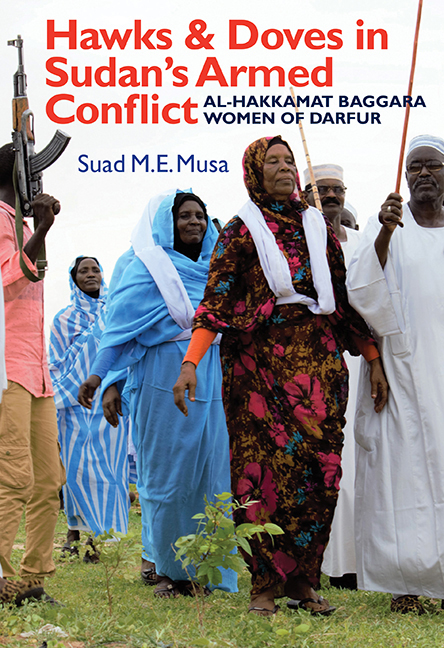Book contents
- Frontmatter
- Dedication
- Contents
- List of Illustrations
- Acknowledgements
- Glossary
- Abbreviations
- Note on Transliteration
- Introduction: Conflict in Darfur and the Role of Rural Darfuri Women
- 1 Ethnicity and Administration in Darfur
- 2 Conflict in Darfur: Causes and Implications
- 3 Al-Hakkamat Women
- 4 Local Inter-ethnic Conflicts
- 5 Government and Racial Assimilation of Ethnic Groups
- 6 Liaising with Government
- 7 New Duties and Obligations
- 8 Roles in Peace and Reconciliation
- 9 Urban Identity and Social Change
- 10 Conclusion
- Appendix: Darfur Chronology, 1445–2017
- Bibliography
- Index
- Eastern African Studies
5 - Government and Racial Assimilation of Ethnic Groups
Published online by Cambridge University Press: 12 October 2019
- Frontmatter
- Dedication
- Contents
- List of Illustrations
- Acknowledgements
- Glossary
- Abbreviations
- Note on Transliteration
- Introduction: Conflict in Darfur and the Role of Rural Darfuri Women
- 1 Ethnicity and Administration in Darfur
- 2 Conflict in Darfur: Causes and Implications
- 3 Al-Hakkamat Women
- 4 Local Inter-ethnic Conflicts
- 5 Government and Racial Assimilation of Ethnic Groups
- 6 Liaising with Government
- 7 New Duties and Obligations
- 8 Roles in Peace and Reconciliation
- 9 Urban Identity and Social Change
- 10 Conclusion
- Appendix: Darfur Chronology, 1445–2017
- Bibliography
- Index
- Eastern African Studies
Summary
Since independence, the government office of Sudan has been dominated by people who are affiliated to the northern part of the country. Those elites served as the right hand of the condominium rulers and then took over when the colonials left the country. They then established themselves as the ruling elites. In order to maintain power and serve their own vested interests, their political approach to ruling the country has become characterised by a system of governance and domestic politics based on racial discrimination: the assimilation of some and dissimilation of others.
This attitude has influenced polarisation among tribes and ethnic groups and created dire situations, especially in peripheral regions where tribes and ethnic groups have been transformed into vehicles for cementing the elites’ power and cultural hegemony. Conflicts have therefore erupted between tribes and ethnic groups, and the government has used this as an opportunity to further polarise people by interpreting these conflicts in ethnic and racial terms. This biased intervention by the government seems to have fuelled the zealous spirit of al-Hakkamat and heightened their ethnic consciousness, which has surpassed all considerations.
THE NATIONAL RULING ELITES
Following independence in 1956, national governments became dominated by the political elites who belonged to northern riverine Sudan and tended to share similar interests and attitudes towards other people in the country. The origination of these elites dates back to the colonial era when they cooperated, as individuals and as families, with the rulers and were able to reap the advantage of the privileged educational and training provisions that the colonial authority offered. Access to these opportunities, however, was not offered equally to all people and sections of society, but to certain people, regions, tribes and ethnic groups, in order to create a loyal clientele class, as well as an efficient clerical elite who could manage the administration office upon the colonials’ withdrawal. Subsequently, they dominated employment and acquired firm control of the economic resources. When they took over from the colonials, they continued with very much the same politics and policies as the colonials.
Thereafter, those elites came together through what could be described as the ‘reciprocal assimilation’ of elites, and firmly entrenched their position as a privileged class in the independent Sudan.
- Type
- Chapter
- Information
- Hawks and Doves in Sudan's Armed ConflictAl-Hakkamat Baggara Women of Darfur, pp. 96 - 114Publisher: Boydell & BrewerPrint publication year: 2018

